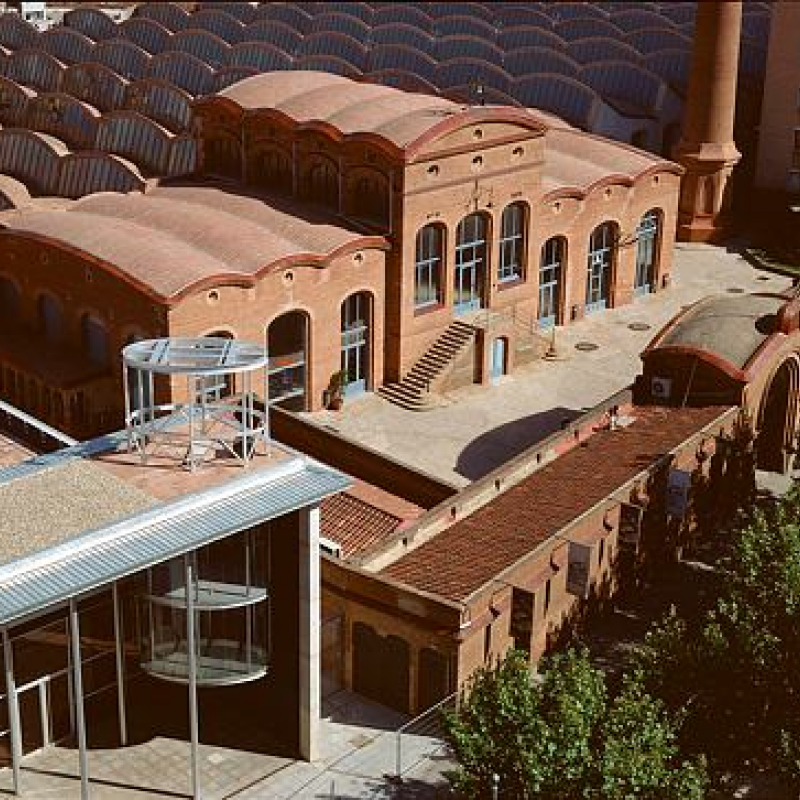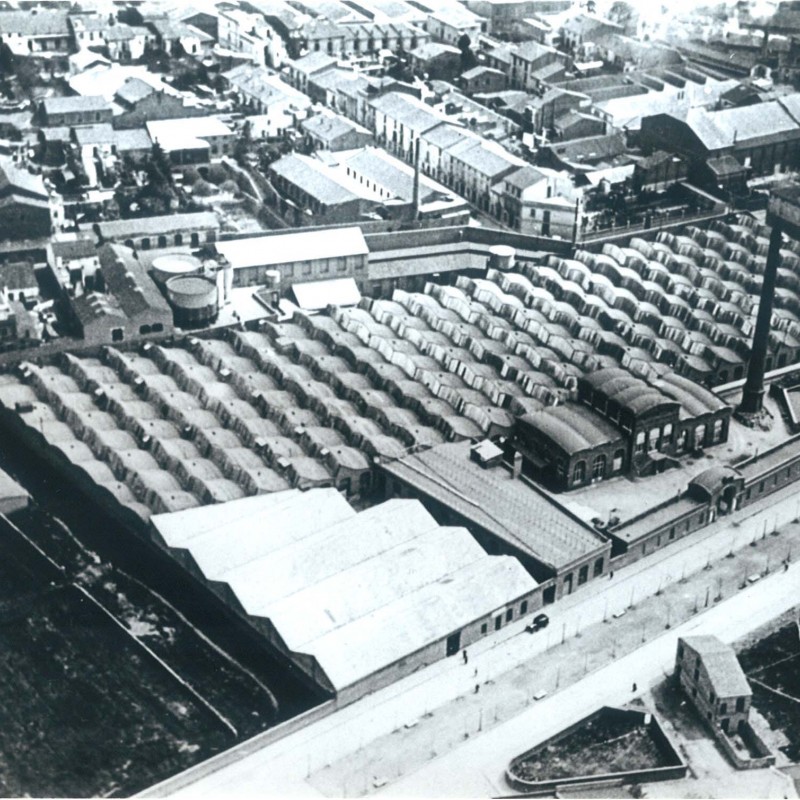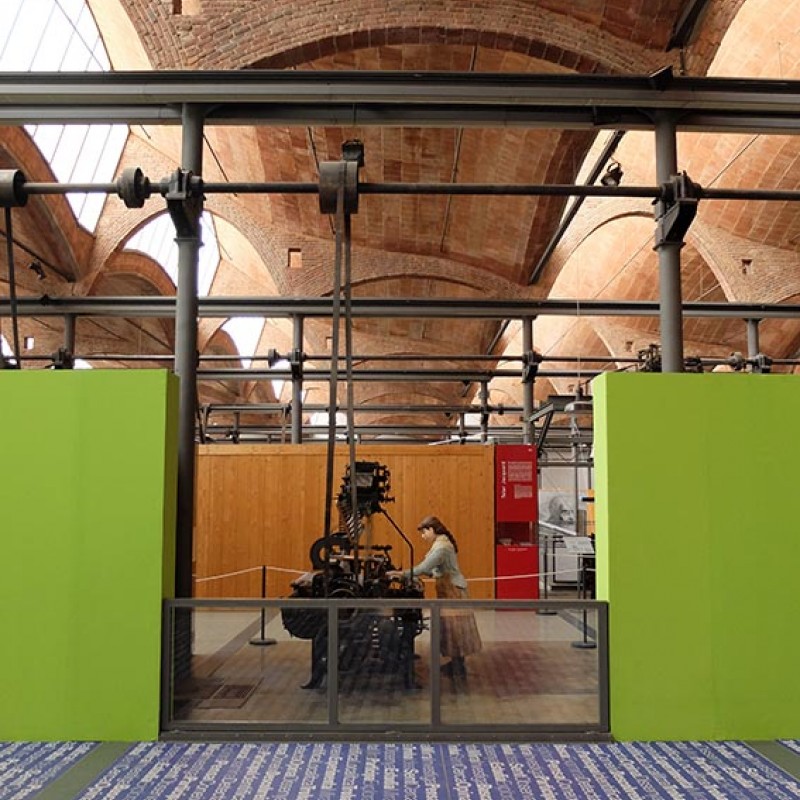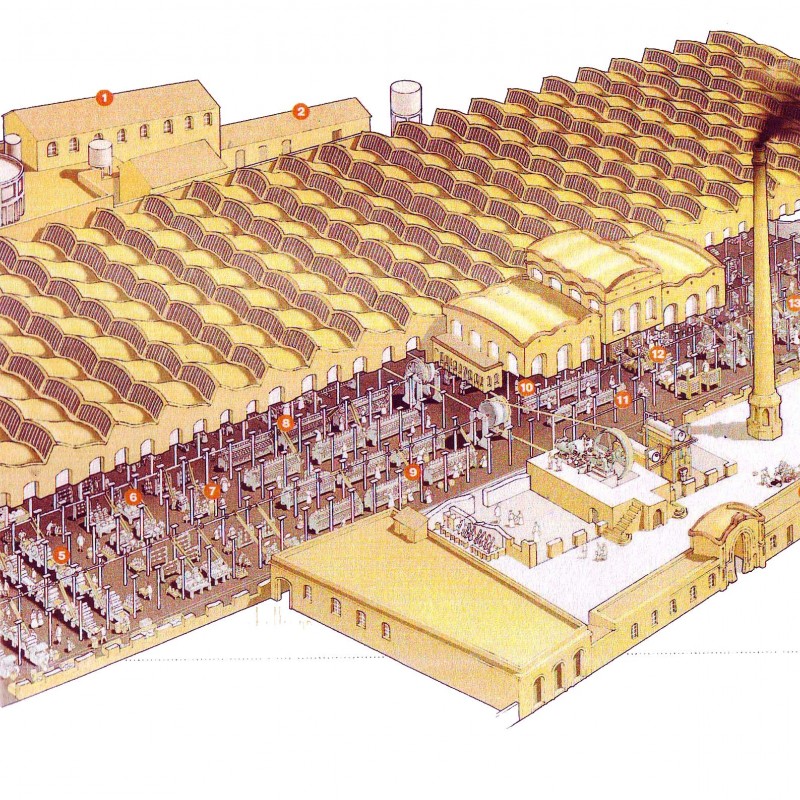Museum of Science and Technology of Catalonia (mNACTEC)
Rambla d'Ègara, 270, 08221 Terrassa, Spain
| Former Use: | Textile mill | 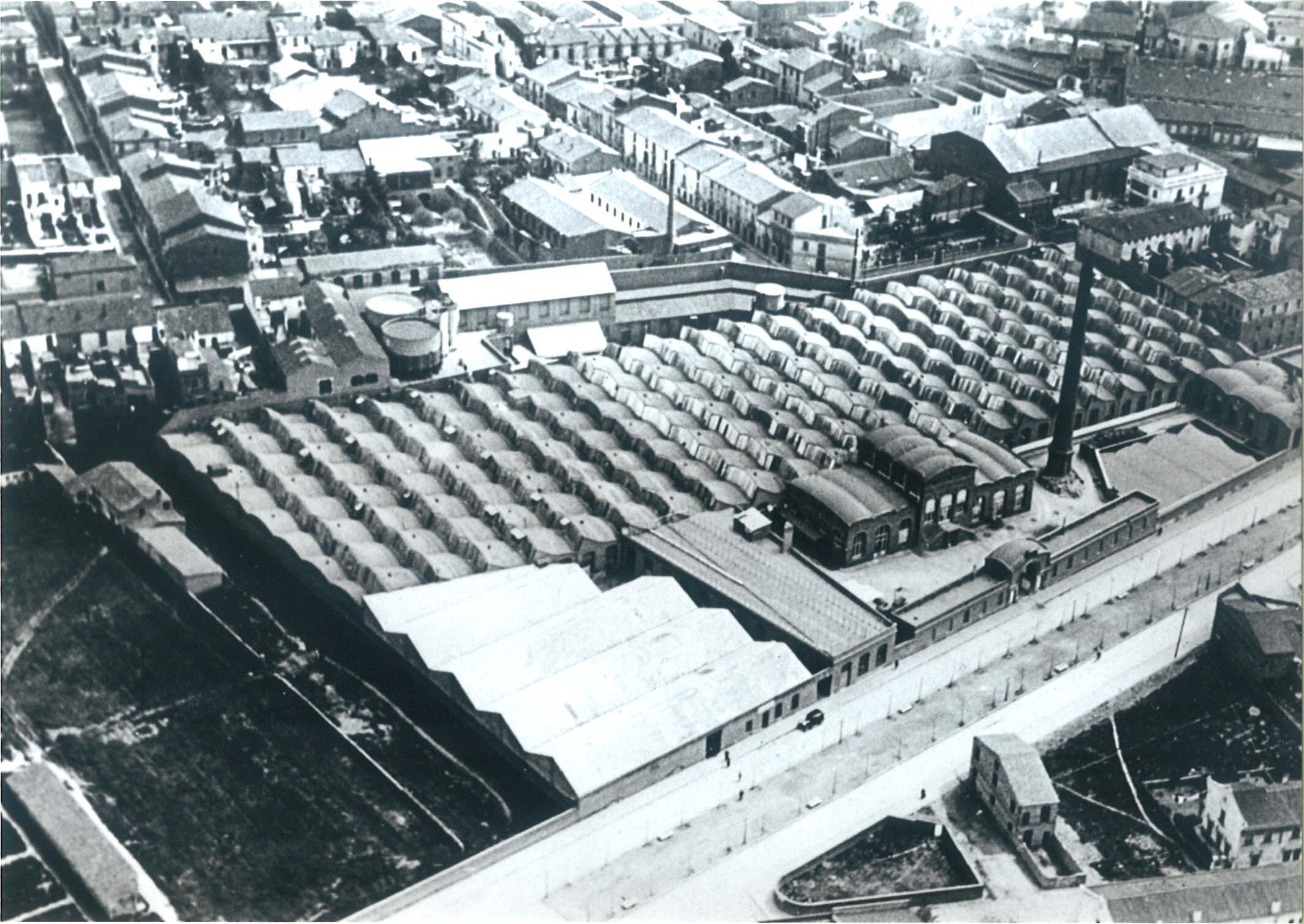 |
| New Use: | Industrial Museum | |
| Category: | Industrial Museum | |
| Website: | http://mnactec.cat/es/ | |
| Original Architect: | Lluís Muncunill i Parellada | |
| Reuse Architect: | Carles Buxadé y Joan Margarit | |
| Construction year(s): | 1907 - 1912 | |
| Reuse year(s): | 1996 - 2000 |
Description:
Historic use
The mNACTEC is housed in the former steamed powered textile mill ‘Vapor Aymerich, Amat i Jover’. The building is located at the Rambla d' Egara, one of the most central streets of the city of Terrassa, within a dense urban fabric consisting of residential complexes, public and commercial buildings and many reused industrial sites as well. Terrassa, located 35km away from Barcelona, played an important role in the industrial revolution, specialising in woollen fabrics.
Vapor Aymerich, Amat i Jover was constructed between 1907 and 1912 by the renowned architect Lluis Muncunill and it is considered the most important Art Nouveau industrial building of Catalonia. (Llordès and Pont, 2014, 256) The most characteristic part of the site is its massive production hall (11.000m2) covered by an emblematic sawtooth profile roof. The roof is formed by 161 Catalan vaults made from flat bricks with a bell-shaped form and it is supported by 300 cast iron pillars.
Initially, the mill was covering the entire industrial process of wool transformation but only a few years later the spinning was moved and its production concentrated on woollen textiles only. As a consequence parts of the building were left empty and were later rented to other companies. In 1962 the floods of Terrassa deeply affected the building, causing various damages and the loss of the company’s archives. This event marked the beginning of a declining course, which coupled with the crisis of the textile sector lead to the closure of the mill in 1976.
Reuse Preparation
The idea for the creation of a national Museum of Science and Technique of Catalonia was conceived in 1937 but the civil war and the dictatorship that followed did not allow its implementation. After the democracy restoration, the idea resurfaced and was dynamically launched by the Association of Engineers of Catalonia in 1977. (Borrás, 1996) During the quest for the selection of an appropriate space for the museum’s establishment in the late 1970s two factors came together dictating its development. On the one hand, the political and practical difficulties of finding such a space in the Catalonian capital and on the other hand, the need to respond to the campaign of the local community and experts of Terrassa, who were whistleblowing the imminent destruction of an exemplary piece of industrial heritage(ACTE, 2011, 88)
E. Casanelles, initiator and director of mNACTEC (1996-2013), elaborating on the selection of the Terrassan mill for housing the museum states:
“The reason why I insisted in creating the museum in the particular building was for protecting it from demolition. I knew that if it were not for the museum this extraordinary piece of industrial architecture would have been demolished. Another reason for its selection was its size (11.000m2), which was suitable for the needs of the museum. We needed a space that would allow us to explain a lot of things and a site that could house big exhibits, too. Lastly, the location of the building in the centre of Terrassa, an important industrial centre with good transportation connections, also influenced the selection.” (interview, 25/9/2017)
In 1983 the Department of Culture of the Catalan government took over the project and bought the building. In the meantime, the process of acquiring objects for the exhibition was launched.
Reuse process
The adaptation of the building was realised in phases. The first phase which was implemented immediately after the purchase of the site, involved the restoration of the facades, the steam engine and the boilers. As soon as these works were completed, the museum opened to the public for the first time.
The second phase, realised from 1987 to 1995 involved the restoration of the site and its extension, with funding from the European Union program FEDER and the Catalan Government. Adding extra floor space to the existing structure was deemed necessary for the allocation of all the functions of a national-scale museum yet it proved to be a particularly challenging venture. On the one hand, the wish of the museum’s director to respect the spatial characteristics of the former mill and predominantly the openness of its main hall and the expressive roof, did not allow its vertical subdivision or extension. On the other hand, the density of its urban context hindered a possible horizontal extension.
The solution was given by the architects Joan Margarit and Carles Buixade, who proposed an underground extension. A subterranean space of 3.300m2 was constructed housing the museum’s library, auditorium, workshop rooms and restrooms while offering extra space for permanent and temporary exhibitions. The basement’s design not only provided the museum with necessary extra space but it also allowed its independent operation, enhancing the museum’s functionality.
It should be noted that during the renovation phase, several technical, structural and financial challenges came up. The most complex ones according to members of the museum’s personnel at the time (interviews, 2017), involved the construction of the underground level and the isolation of the roof. Furthermore, the restricted budget did not permit the installation of a system for controlling properly the internal climate of the building.
As regards the allocation of the museum administration, E. Casanelles explains:
“The architects originally proposed to create a bigger underground space for housing the offices of the museum too but I disagreed as it was too expensive. We therefore decided to build a mezzanine for housing the administration. This solution was also offering a balcony which provided a nice overview to the main hall of the museum while serving as a nice finishing of the hall.” (interview, 25/9/2017)
In the same period, three more important developments took place. Firstly, with the Museums Act of 2 November 1990, mNACTEC was declared a National Museum and it was established as an autonomous entity. (http://mnactec.cat/en/the-museum/the-mnactec-detail/history) Secondly, ENDESA, the largest electric utility company in Spain, agreed to become the patron of the first part of its permanent exhibition “Energy”, providing the museum with 300 million pesetas. In 1998 Caixa Terrassa bank following ENDESA’s initiative, bankrolled the exhibition “the textile mill”. Thirdly, the Regional structure of mNACTEC boomed. (Borrás, 1996,3) As the appeal of the museum was rising, more and more Catalonian municipalities were expressing interest for joining the network. By 1996, it was numbering 20 museums.
The final phase of the building’s adaptation took place between 1999-2000 with the transformation of a former warehouse into the new entrance of the museum. Even though initially the warehouse was scheduled for demolition the plans did not go through. According to E. Casanelles, (interview, 25/9/2017) the demolition of the building would have resulted in the exposure of a neighbouring façade of small architectural value and the destroying of the mill’s patio. The architects Quim Larrea and Francesc Patris preserved the old building and added a new façade with modern material and intense colours, making it prominent while differentiating it from the historic complex. The transformed building housed the museum reception and additional education rooms in a new mezzanine. On its roof a restaurant was designed, providing spectacular views of the complex and its Art Nouveau roof.
Operation
The museum was officially inaugurated in 1996 and since then, along with its regional network, it has been established as a beacon of industrial, technical and scientific knowledge. Apart from preserving and restoring a wealth of scientific and technical items from the past and present, mNACTEC also plays a significant, cultural and educational role. It disseminates knowledge on modern science and techniques, creates awareness about the industrial process in Catalonia and contributes substantially to the consolidation of specialised museology.(ACTE, 2011,88) mNACTEC is a nationally owned Museum dependent on the Directorate-General for Archives, Libraries, Museums and Heritage. It is funded by the Catalan government and generates a modest revenue from the admission fees, the fixed space rentals (roof restaurant, courtyard café at.al) and the hiring of some of its spaces for corporate or private events. According to mNACTEC’s Annual Report 2016 (mNACTEC, 2016), the museum welcomes c. 105.600 visitors per year divided almost equally into general public and school groups.
Over the last two decades of its operation, the museum has enriched its collections offering a wide variety of permanent and temporary exhibitions. The former ones cover the topics of energy, transport, textile production, technological evolution, industrial architecture, the human body and science with emphasis on computers, nuclear research and chemistry. (http://mnactec.cat/en/exhibitions/permanent)
The set-up of the exhibitions is carefully chosen so that the spatial values of the historic mill are kept intact while offering an experience to the visitors.
“The selection of partition panels in the main hall was for accommodating different exhibitions and for creating the feeling of a maze. I did not want to leave everything visible. When visiting the car museum of London I came to realise that it is interesting to offer surprises in a museum. So I decided to create a museum like a labyrinth and invite the visitors to discover it.” commends E. Casanelles (interview, 25/9/2017)
Currently, the museum sustains its regular activities including permanent and temporary exhibitions, conservation and restoration work et.al. while placing more emphasis on maximising its visibility. This is attempted through the use of social media, the organisation of educational programs for students and teachers and the organisation of various events for attracting diverse target groups.
Shifts
Since its official establishment mNACTEC has become more and more popular on a national and international level. This statement is supported on the three following facts. Firstly, mNACTEC is repeatedly cited as a model case in the international literature on industrial heritage museums (negri, 2012, Journal Archaeologia, 101 monumentos de patrimonio industrial en espana et.al). Secondly, the regional structure mNACTEC not only has withstood the test of time but it has grown from 20 museums in 1996 to 28 today. Lastly, the visitor numbers of the museum and its network have risen substantially over the past couple of years.(mNACTEC, 2016)
Albeit these positive developments mNACTEC was not left untouched from the recent financial crisis. The restricted financial means of the public sector caused a noteworthy reduction of the museum’s personnel, from 28 people in 2013 to 19 today. (mNACTEC, 2016) Also, according to the respondents of this research,(interviews, 2017) the maintenance of the museum is becoming harder and harder given the available funds.
Regional Structure of mNACTEC
One of the most notable achievements in the field of industrial heritage preservation and interpretation in Spain is the creation of the Regional Structure of the National Science and Technology Museum of Catalonia. Founded in 1984 with the establishment of mNACTEC in Terrassa as the main hub and three peripheral smaller museums, the network kept growing reaching today 28 industrial museums and heritage sites across Catalonia.
The aim of the decentralized museum is to interpret the rich industrial legacy of the region, through collections, exhibitions and the in situ presentation of different production activities. Furthermore, its social scope involves the historic awareness and the restoration of the local communities’ pride as well as the invigoration of a territorial identity.(Prats, 2010) The network presents a large diversity of activities divided territorially, ranging from product and energy production to processing, extraction and transport. Its main characteristic is the flexibility of its organisation which allows its organic development. The regional Structure of mNACTEC is one of the oldest examples of industrial museum networks yet one of the most comprehensive and dynamic ones. It has served as an inspiration for many similar projects across Europe, including the ΠΙΟΠ network analysed in p.XX. (Negri, 2012, 186) (http://sistema.mnactec.cat/es/)
Relevant Literature:
- Museu de la Ciència i de la Tècnica de Catalunya [Online]. Available: http://mnactec.cat/en/ [Accessed 7/2/2018].
- Sistema Territorial del Museu Nacional de la Ciència i de la Tècnica de Catalunya [Online]. Available: <http://sistema.mnactec.cat/en/about-us/ >[Accessed 7/2/2018].
- ACTE 2011. ACTE European Textile Collectivities Association: 20 years of innovation Spain.
- Borrás, X. 1996. El paso decisivo del Museu. Magazine fin de semana, 3/2/1996, p.2.
- Llordès, T. & Pont, F. 2014. Espais recobrats. Els nous usos del patrimoni industrial català, Terrassa, mNACTEC.
- mNACTEC. 2016. Memoria 2016: Museu Nacional de la Ciència i de la Tècnica de Catalunya [Online]. Available: http://mnactec.cat/documents-mnactec/Memoria-mNACTEC-2016.pdf [Accessed 7/2/2018].
- Negri, M. 2012. Industrial museums. In: DOUET, J. (ed.) Industrial Heritage retooled: The TICCIH guide to industrial heritage conservation. Lancaster: TICCIH.
- Prats, C. J. 2010. El Sistema territorial del mNACTEC: patrimonio, identidad y públicos.
